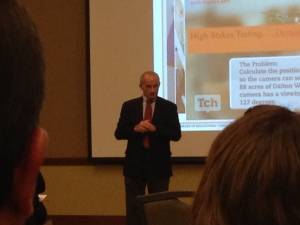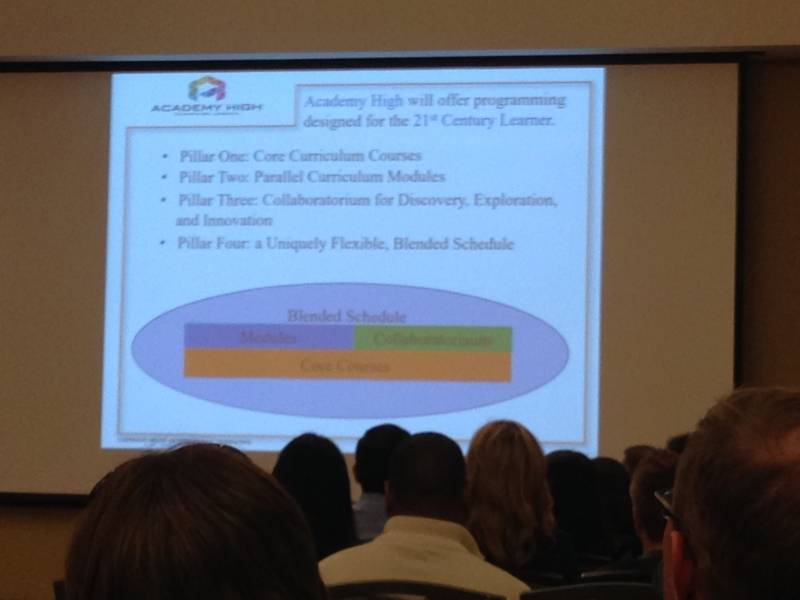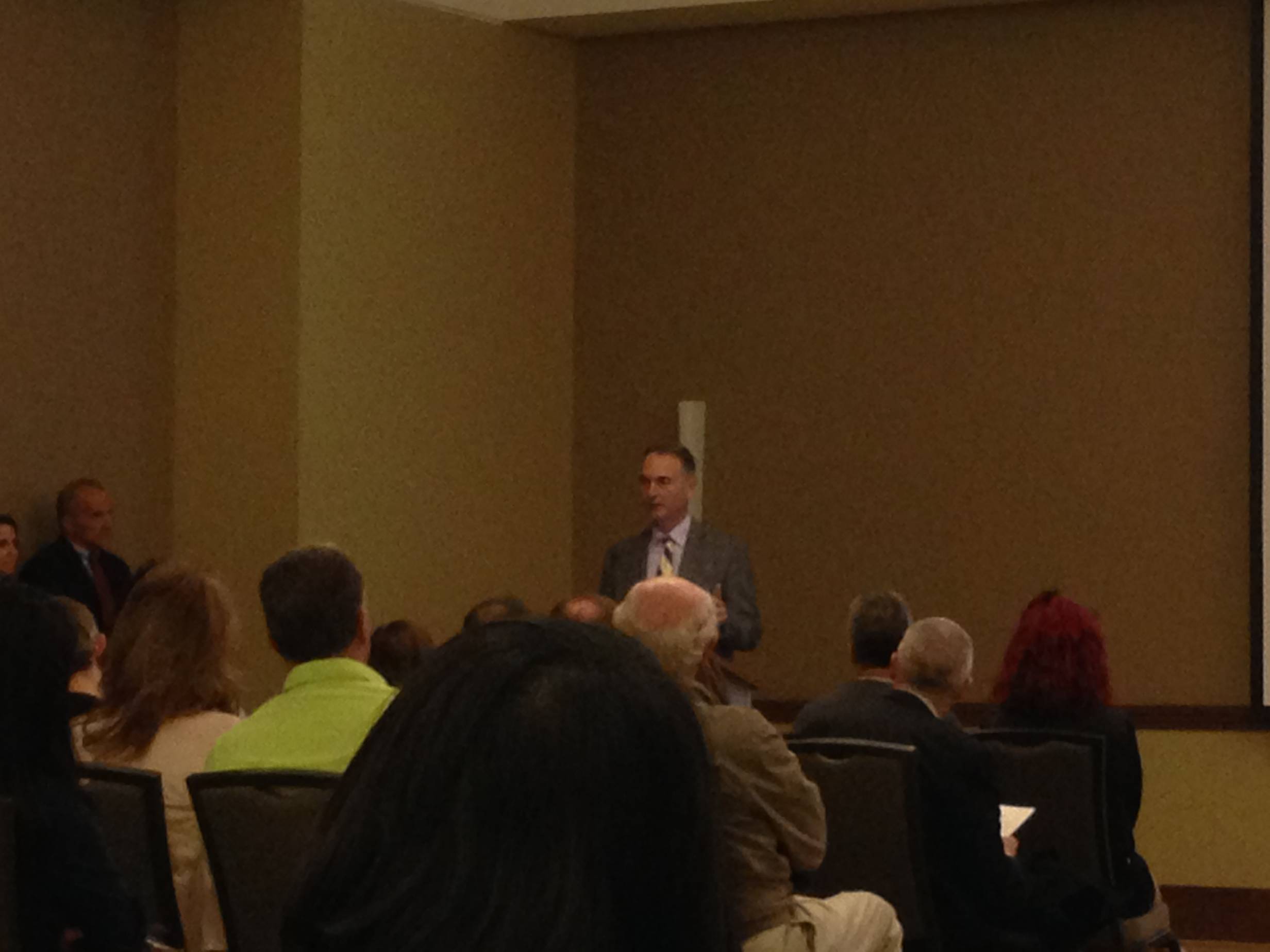Alone. Cold. Water filling every opening; pouring into my body, slowly. The neurons are not making coherent signals; I can’t function. My task will be unfinished and my purpose failed. The life in me dies as I sink to the bottom of the pool… Or at least that’s how I’d feel if I were the failed high school project for one of your kid’s Academy High final projects. Stephen Schwager, speaker and educator, says he would rather have his kids fail and create something than learn through traditional textbook readings.
 The final project Schwager referred to was first explained by Rich Odell, the CEO of Heads Up. He used current innovative high school’s projects — such a high school student creating Google Glass wear to his mother see or mobile snowball projectors — as a springboard to illustrate his expectations for Academy High. Schwager explained he would rather see his daughter’s robot sink to the bottom of the pool in failure than have her learn physics through reading about the generic situations which current academia relies so heavily upon.
The final project Schwager referred to was first explained by Rich Odell, the CEO of Heads Up. He used current innovative high school’s projects — such a high school student creating Google Glass wear to his mother see or mobile snowball projectors — as a springboard to illustrate his expectations for Academy High. Schwager explained he would rather see his daughter’s robot sink to the bottom of the pool in failure than have her learn physics through reading about the generic situations which current academia relies so heavily upon.
The school is hoping to open at the University of Illinois Research Park in Fall of 2017. They will make applications available in October of this year for the 2017 academic year. Opening to only 9th and 10th grade students, the first classes are expected to be small — but are (hopefully) going to grow to around 400 students. Right now, as Richard Odell pointed out, the goal is to get as many people involved as possible. When asked about promoting diversity, he answered, saying the best way to do it is to get a diverse committee involved from the start to promote diverse students. They also hope to raise the bar for all students by offering internships and programs to all high school students in the C-U area.
When painting the picture of Academy High’s aesthetics and curriculum, Odell said it would look like a warehouse. The integration of learning with technology as a form of communication is essential. Schwager expanded saying it’s a “noisy place with kids creating.” It will be a “four pillar” approach, with an emphasis on traditional classes, modules, collaboration, and a blended schedule. It is focused on seeing the connections between classes and between different lines of thought.

Two important questions were asked in the Q&A related to the specifics of technology’s role at Academy High:
What makes the 21st Century different from earlier centuries? How does Academy High address this?
Answer: The answer is a globally reaching technological network and an information revolution.
The specifics of Academy High’s position in the midst of these revolutions is yet to be clearly defined. There was mention of connecting with classes across the world and allowing students to chase seemingly unimportant interests. For example, if a student wanted to work on a final centered around Taylor Swift, the school would focus on some aspect of Taylor Swift: the fashion, the cinematography for the music video, the structure of the songs, etc. that has real world application.
A second question, in two parts:
How does Academy High plan on integrated technology into the curriculum, and how does this affect the role of teachers as educators?
Answer: a high-tech, “high-touch” approach.
“High-touch” is the emphasis on hiring staff that can use technology to both teach and inspire students. In addition, there was mention of using flint classes like Khan Academy as teaching mechanisms with the teacher as a guide to that learning. There was also an emphasis on “21st century programming.” Unfortunately, the specifics of these questions along with others regarding tuition, location, admission won’t be answerable for another few months.
Connecting these lofty goals with University of Illinois’ Research Park’s history certainly could make for a successful high school. This long history of prosperous innovation will be instilled in Champaign one step younger into the minds and dreams of high schoolers. This spirit of technological creativity and experiential integration is the driving force that makes Academy High unique and exceptional.








